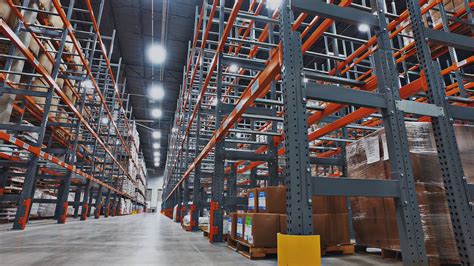The Pallet Packing Playbook: Case Capacity Strategies
Optimizing pallet packing is crucial for businesses across various industries. Efficient pallet loading maximizes warehouse space, minimizes shipping costs, and reduces the risk of damage during transit. This playbook dives into key strategies for achieving maximum case capacity on your pallets, ensuring smooth logistics and significant cost savings. We’ll explore different packing techniques, considerations for product fragility, and how to leverage technology for improved efficiency.
What is Pallet Packing Optimization?
Pallet packing optimization involves strategically arranging cases on a pallet to achieve the highest possible capacity while maintaining structural integrity and product safety. This isn't just about cramming as many cases as possible; it's about finding the balance between maximizing space and minimizing waste, damage, and shipping costs. Poorly packed pallets lead to increased shipping expenses, product damage, and potential warehouse safety hazards.
Key Factors Affecting Case Capacity
Several factors influence how many cases you can fit onto a pallet and how securely they'll be held during transport:
- Case Dimensions: The size and shape of your cases directly impact how they fit together on a pallet. Understanding the precise dimensions is the first step towards efficient packing.
- Pallet Size: Standard pallet sizes (e.g., 48x40 inches) are common, but variations exist. Knowing your pallet dimensions is critical for planning.
- Product Weight and Fragility: Heavy or fragile products require special considerations for stacking and securing to prevent damage and maintain stability.
- Packaging Material: The type of packaging (e.g., cardboard boxes, plastic containers) affects its strength and ability to withstand stacking pressures.
- Loading Method: Different loading methods (e.g., layer stacking, interlocking patterns) impact the final case count and stability of the load.
Common Pallet Packing Techniques
Several proven techniques can improve case capacity:
- Layer Stacking: This straightforward method involves stacking cases in uniform layers on the pallet, creating a stable and easily manageable load. It's ideal for sturdy, non-fragile products.
- Interlocking Patterns: This technique interlocks cases to create a more compact and stable configuration, reducing the risk of shifting during transport. It's particularly useful for irregularly shaped cases.
- Mixed-Load Techniques: This approach combines different-sized cases on a single pallet, maximizing space utilization when dealing with diverse products. Careful planning and consideration of weight distribution are essential.
- Block Stacking: This method involves creating a tightly packed block of cases, often using bracing or dunnage to further secure the load. It's well-suited for heavy or dense products.
How to Optimize Pallet Packing for Fragile Items
Packing fragile items requires extra care. These strategies can significantly reduce the risk of damage:
- Protective Packaging: Employ additional protective materials like bubble wrap, air pillows, or void fill to cushion fragile items within their cases.
- Inner Packaging: Use dividers or inserts inside cases to prevent individual items from shifting or colliding.
- Reinforced Packaging: Select stronger packaging materials or reinforce existing ones with additional tape or straps.
- Strategic Placement: Place the heaviest and most fragile items closer to the pallet's center for maximum stability.
Leveraging Technology for Improved Pallet Packing
Technology plays a vital role in optimizing pallet packing:
- Pallet Loading Software: Specialized software can simulate different packing configurations, helping you visualize the best arrangement for maximizing case capacity and stability.
- 3D Modeling: Creating 3D models of your products and pallets allows for precise planning and visualization before physically packing.
- Barcode and RFID Tracking: Tracking individual cases with barcodes or RFID tags provides real-time visibility into the entire supply chain, enhancing efficiency and improving inventory management.
Addressing Common Pallet Packing Challenges
Several challenges can hinder effective pallet packing:
- Irregular Case Sizes: Developing efficient packing strategies for oddly shaped or sized cases can be complex.
- Weight Distribution: Uneven weight distribution can lead to unstable loads, increasing the risk of damage or tipping.
- Product Fragility: Fragile goods require special attention to prevent breakage during shipping.
Conclusion: The Path to Efficient Pallet Packing
Efficient pallet packing is a multifaceted process requiring careful planning and consideration of various factors. By understanding the key principles, employing appropriate techniques, and leveraging available technologies, businesses can significantly reduce costs, minimize damage, and improve overall logistics efficiency. Remember, optimizing pallet packing isn't a one-size-fits-all solution – the best approach depends on the specific characteristics of your products and business needs.

